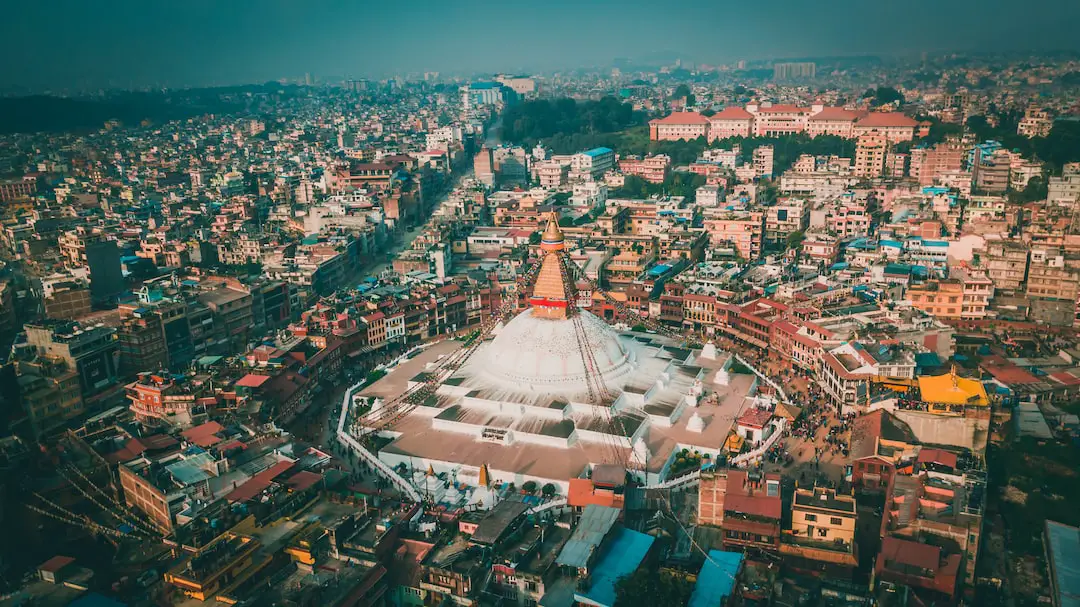
Nestled in the heart of the Himalayas, Kathmandu, the capital city of Nepal, is a treasure trove of architectural marvels. Its skyline tells a tale of time, with structures that whisper the secrets of a bygone era. As someone who’s wandered through its alleys and admired its edifices, I’ve seen firsthand how the city’s architecture is a melting pot of history, culture, and innovation.
The Roots of Tradition
Kathmandu’s architectural journey began with the pagoda style, deeply influenced by Indian, Tibetan, and Chinese aesthetics. The tiered temples, with their intricately carved wooden windows and statuesque deities, are more than just places of worship; they’re a testament to the city’s spiritual heartbeat. Durbar Square, a UNESCO World Heritage site, is a living museum showcasing this ancient style. Here, the Hanuman Dhoka Palace stands as a sentinel to the city’s regal past.
Brick by Brick: The Malla Influence
The Malla dynasty, which ruled from the 12th to the 18th century, left an indelible mark on Kathmandu’s architectural landscape. The Mallas were great patrons of the arts, and their reign heralded a renaissance in Nepalese architecture. The Nyatapola Temple in Bhaktapur is a striking example of their legacy, soaring skywards with its five majestic tiers, each one symbolizing the five elements.
Colonial Encounters and Rana Resplendence
The Rana period brought with it neoclassical influences, a stark contrast to the indigenous styles. The Ranas, enamored by European architecture, erected palatial buildings that echoed the grandeur of Victorian and Edwardian mansions. The Singha Durbar, with its opulent halls and sprawling gardens, is a relic from this era, blending European flair with Nepalese craftsmanship.
Modern Movements and Earthquake Resilience
Fast forward to the 20th century, and Kathmandu’s architecture began to embrace modernity. Concrete and steel structures started dotting the landscape. However, the devastating earthquakes of 1934 and 2015 were stark reminders of the need for resilient building practices. The city is now seeing a rise in earthquake-resistant designs, ensuring that the new wave of construction can withstand the region’s seismic activity.
Preservation and Progress: A Balancing Act
Today, Kathmandu stands at a crossroads between preserving its rich architectural heritage and forging ahead with modern development. Efforts to restore earthquake-damaged monuments are underway, with a focus on retaining authenticity. Meanwhile, contemporary architects are finding ways to integrate traditional motifs into new constructions, creating a harmonious blend of old and new.
FAQs
What is the most distinctive feature of Kathmandu’s traditional architecture?
The most distinctive feature is the pagoda style, characterized by multi-tiered roofs, intricately carved woodwork, and ornate facades. This style is prevalent in many of Kathmandu’s temples and palaces.
How did the 2015 earthquake affect Kathmandu’s architecture?
The earthquake caused significant damage to many historic buildings and temples, prompting a massive restoration and rebuilding effort. It also led to a shift towards more earthquake-resistant construction methods.
Are there any modern architectural sites in Kathmandu worth visiting?
Yes, alongside the ancient structures, there are modern architectural sites such as the Supreme Court building and the National Library, which incorporate contemporary design while reflecting Nepalese cultural elements.
Conclusion
Kathmandu’s architecture is a narrative of resilience and beauty, evolving from the pagoda roots to the Rana extravagance and now to modern practicality. The city’s skyline is a canvas painted with the strokes of history, each building a brushstroke of Nepal’s rich cultural legacy. As Kathmandu continues to rebuild and reinvent itself, its architecture remains a poignant reminder of the past and a beacon of hope for the future. For those of us who’ve walked its streets and felt the pulse of its heritage, Kathmandu’s architectural evolution is not just a study of structures; it’s a journey through the soul of a civilization.
In crafting this article, I’ve woven together the threads of Kathmandu’s architectural tapestry, aiming to capture the essence of its transformation. From the pagoda to the palace, each structure tells a story, and I hope to have brought these stories to life for you. Whether you’re a history buff, an architecture enthusiast, or simply a curious soul, Kathmandu’s architectural evolution is a testament to human creativity and endurance.